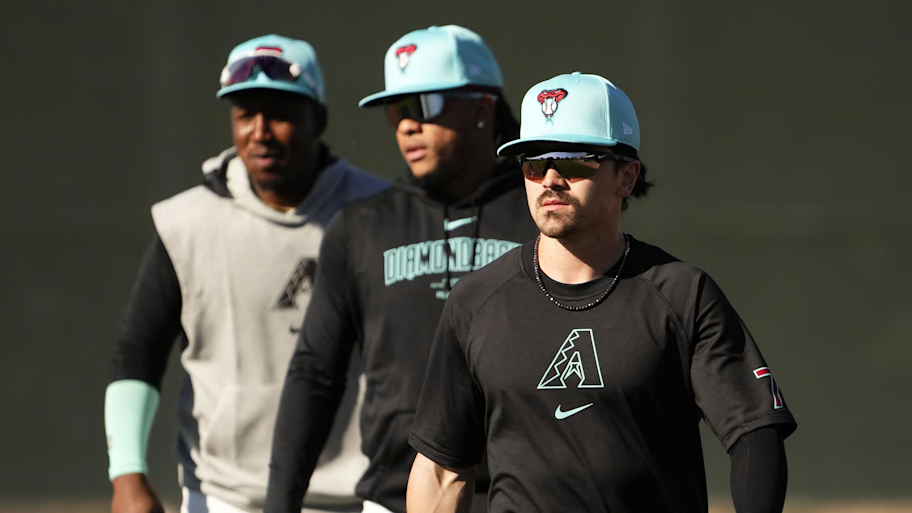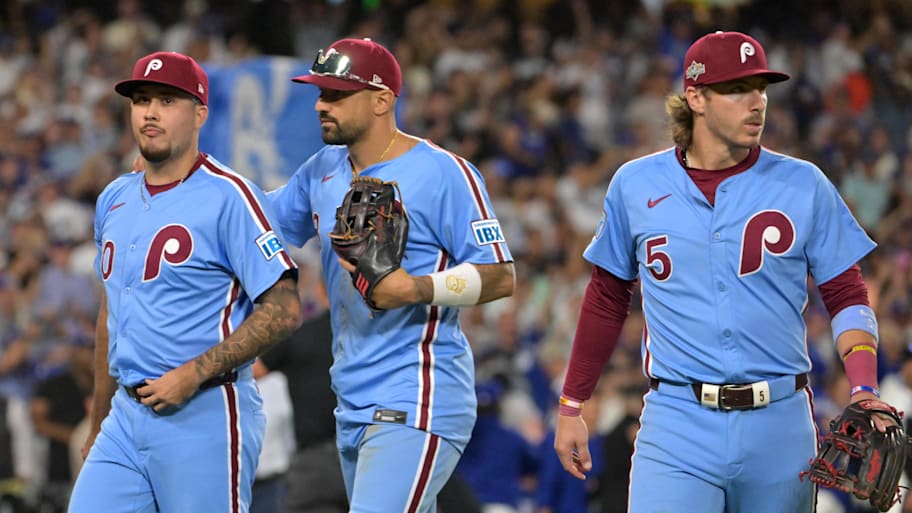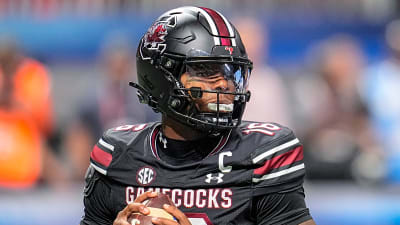
When discussing the Arizona Diamondbacks' offensive production over the past several seasons, the general evaluation is that of a well-above-average group.
In fact, the D-backs ranked in the top 10 in nearly every major offensive category. They ranked fifth in OPS (.758), third in slug (.433) and eighth in home runs (214).
But with a much different group of hitters set to suit up in 2026, there's one major question about the viability of Arizona's lineup — is the D-backs' offense too top-heavy?
Is Arizona Diamondbacks' Offense Top-Heavy?

Let's put aside the contributions of Eugenio Suárez and Josh Naylor, for the time being, as 2026's Opening Day lineup will likely look much closer to the average post-Deadline lineup than the one that took the field to begin 2025.
From the time of the Trade Deadline (July 31) on, the D-backs' offense was still productive (.754 OPS). But it was extremely reliant on their top four hitters.
Geraldo Perdomo, Corbin Carroll and Ketel Marte are stars. They should be carrying a large share of the load. And when healthy, Lourdes Gurriel Jr. and Gabriel Moreno contributed at a high level, as well.
Related Content: 3 D-backs All-Stars Named Silver Slugger Finalists
Post-Deadline, Arizona's 1-4 in the order hit to a .288/.377/.498 slash, good for an .875 OPS. They hit 38 homers, 46 doubles, six triples, and contributed 137 RBI. Their 141 wRC+ (41% above league average) ranked third in the majors.
Those batters also walked 111 times against 163 strikeouts over the course of 960 plate appearances.
Now, let's take a look at the other end of the order:
Arizona's 5-9 hitters were, admittedly, a group of young, unproven players. Some were forced into larger roles due to trade or injury, while others earned their keep through their play.
Regardless, the disparity in offensive production was extremely evident.
Those five spots in the batting order contributed just a .232/.283/.367 slash for the D-backs after July 31, posting a .650 OPS. Their 79 wRC+ (21% below average) ranked 21st in MLB.
Over the span of 1,076 plate appearances, those hitters struck out 292 times while taking just 57 walks. That adds up to a 27.2% strikeout rate and 5.3% walk rate.
For some context, Suárez — a strikeout-prone and walk-reluctant slugger — holds a career 9.5% walk rate and 27.4% strikeout clip. Gurriel, who nearly never takes walks, has a career 5.6% walk rate.
Now granted, a significant drop-off is to be expected when comparing top-order stars with lower-order platoon players and rookies.
So let's put them up against some other comparable clubs.
How Do D-backs' Splits Compare to Similar Offensive Teams?

The Philadelphia Phillies, who owned a team OPS just one point better than Arizona in 2025, got a .791 OPS, 116 wRC+ and 22.8% strikeout rate from their 5-9 post-Deadline.
The New York Mets, five points worse than the D-backs in team OPS, received a .703 OPS, 99 wRC+ and 23.2% strikeout rate down the order.
A familiar friend — the Seattle Mariners — posted a .740 full-season OPS, but got a post-Deadline .730 OPS, 109 wRC+ and 24.1% K clip from their 5-9 hitters.
(All numbers via FanGraphs).
The point is, it's not a universal rule that production has to come solely from the top of the order. The Diamondbacks' 5-9 hitters simply did not perform.
So while, as a whole, Arizona's offensive production was among MLB's best, there lies a serious concern about the sustainability thereof.
If Carroll, Perdomo Marte or Moreno miss time (or have a down year), the D-backs will have to hope for some positive regression by some of their younger, lighter-hitting 5-9 batters, since depth of offense is not on Arizona's side based on 2025's findings.
Arizona Diamondbacks Latest News
More must-reads:
- World Series Game 4 takeaways: Blue Jays' big inning evens series, Shane Bieber outduels Shohei Ohtani
- World Series takeaways: Shohei Ohtani’s historic night sets stage for Freddie Freeman’s 18th-inning walk-off
- The 'World Series walk-off home runs' quiz
Breaking News
Trending News
Customize Your Newsletter
 +
+
Get the latest news and rumors, customized to your favorite sports and teams. Emailed daily. Always free!








